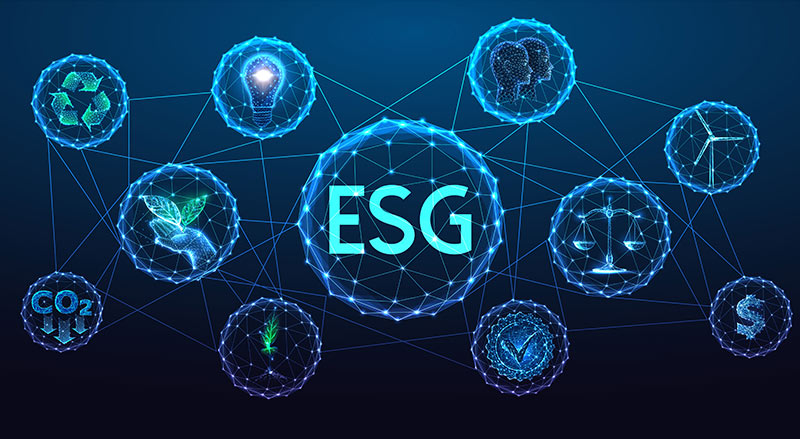Blockchain transactions are the ultimate measure of throughput and energy efficiency. They are created through use and utility, solving today’s information security, data management and monetisation issues with proof-of-work, micropayments, tokenisation and smart contracts.
While it is important to understand the impact that blockchains have on the environment, we must keep in mind that most research correlates CO2 emissions with mining revenues and not the number of transactions. This is very misleading.
Since mining is what consumes energy and blocks are the product of mining, the more transactions in a block, the lower the energy consumption and carbon footprint per transaction.
Blockchain transactions are the ultimate measure of throughput
Input vs Output / Sustainability = Scalability
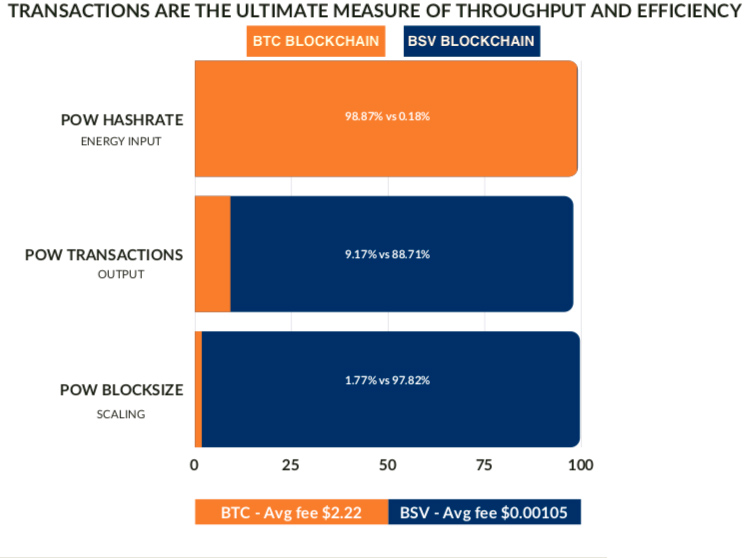
How to calculate and compare blockchain energy consumption
| BTC BLOCKCHAIN | BSV BLOCKCHAIN (BSV) |
|---|---|
| • Total Hash: 136,270 PH/S* | • Total Hash: 765.31 PH/S* |
| • Energy Consumption: 706 kWh* | • Energy Consumption: 3.3 kWh* |
| • BTC processes on average 260,000 per day. | • BSV has 3.5 million average transactions per day. |
| • BTC can only process 4.6 transactions per second.** | • BSV is able to process 100K transactions per second.* |
| • BTC transactions are not able to include data. | • BSV transactions can include data, script and is Turing Complete. |
| • Daily average block size is <1.5MB**** | • Daily average block size is 25 – 286 MB.*** |
| • BTC block size is capped at 1Mb per block with an average block occurring once every ten minutes. | • BSV has an unbounded block size and regularly produces multi-gig sized blocks a day. |
| • BTC fees fluctuate based on congestion due to limits. | • BSV fees remain stable for micropayments and decrease with volume. |
How to calculate and compare blockchain energy consumption
* Source: https://www.mnp.ca/en/insights/directory/the-search-for-a-more-efficient-bitcoin
*** 6 months data according to https://blockchair.com/bitcoin-sv/charts/average-block-size accessed on 1 February 2022
**** 6 months data according to https://ycharts.com/indicators/bitcoin_average_block_size accessed on 1 February 2022
***** Source: https://www.prnewswire.com/news-releases/9-000-transactions-per-second-bitcoin-sv-hits-new-record-301217145.html
The data economy – blockchain digital thread transparency & its role in ESG
The data economy removes data silos and promotes economic cooperation and transparency.
Through the integration of emerging technologies such as smart devices, IoT, RFID, 5g, drones, cameras, and using a secure, scaled, sustainable, public, permissionless blockchain – the more efficiencies and automation can be achieved – incentivising a global green circular economy.
Proof-of-work provides the public infrastructure needed for advanced security, transparency, interoperability and long-term sustainability.
Blockchain technology offers an honest, open and stable architecture, providing the foundation for connected systems that can help to make better, real-time decisions, increase the efficiency of energy usage and improve the overall quality of life.
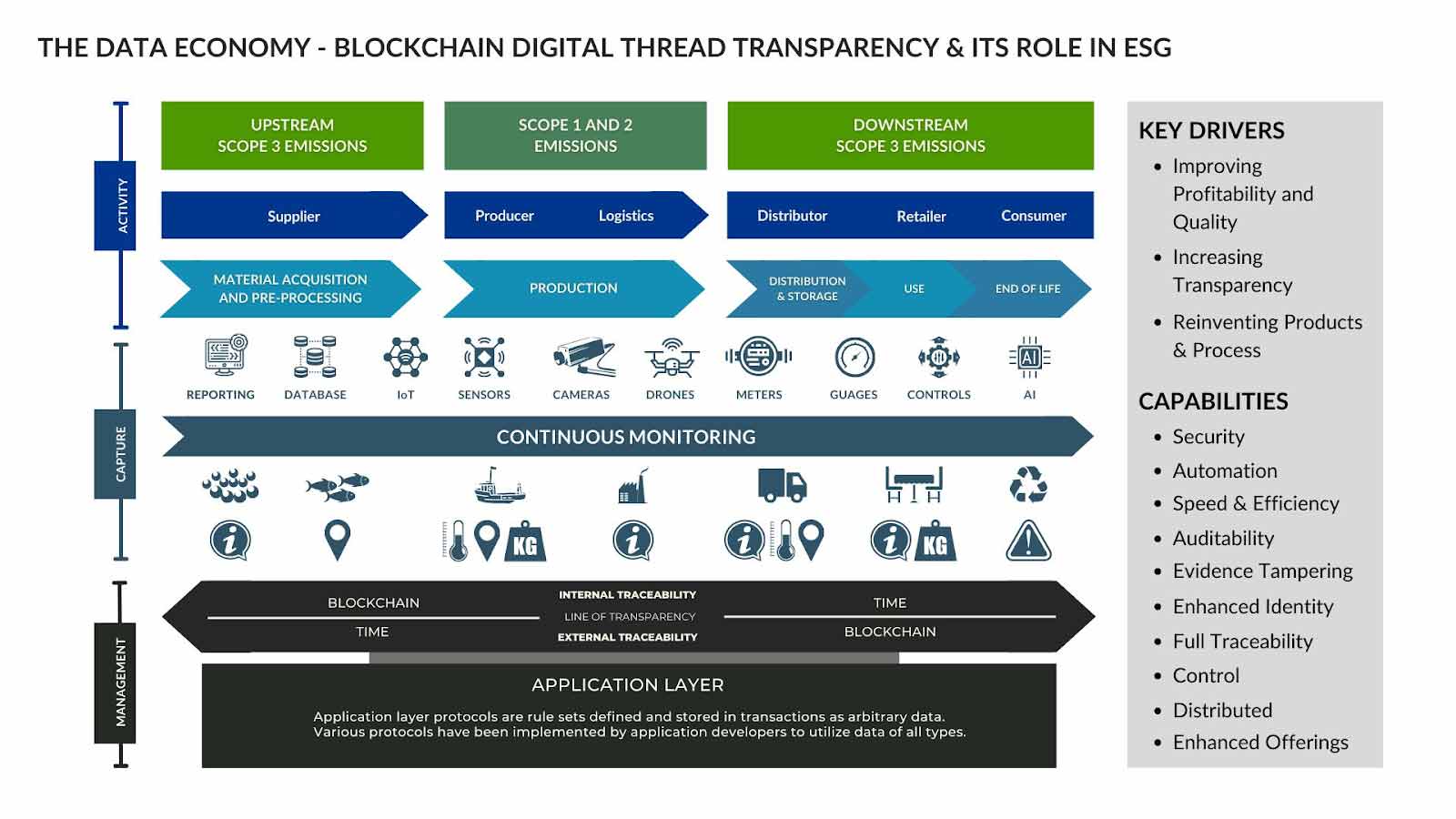
Measure ESG with blockchain
The ESG stamp initiative
As enterprise, non-profit, and government blockchain adoption continues, the ‘economy of scale’ and ‘path to zero’ will converge, offering an opportunity for organisations to highlight their accountability, social responsibility and dedication towards a sustainable future.
If these areas fall within your purview at work or your personal ambition, get involved today and help make a verifiable impact with the proof-of-ESG / The ESG Stamp Initiative
The proof-of-ESG / ESG Stamp Initiative incorporates an agenda to reimagine ESG reporting through strategic blockchain reinvention and business transformation – empowering the foundation of ESG reporting with a universal source of truth.
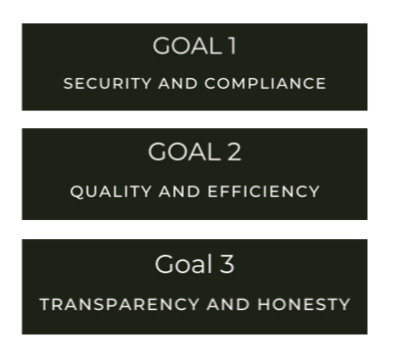
The open initiative includes:
– ESG Blockchain Framework Workgroups to provide blockchain-based ESG reporting guidelines, frameworks and best practices
– Energy Efficiency Rating System to provide an ESG energy efficiency reporting and rating system for transaction processors
– proof-of-ESG stamp / certification to provide a blockchain-based ESG Stamp and certification for honest ESGreporting
– ESG Blockchain Consultation to provide holistic ESG consultation with a focus on integrating blockchain for efficiency
– ESG Blockchain Solution Distribution to provide access to new blockchain-based ESG solutions enabling impact and honesty
– An upcoming Carbon Offset Marketplace to provide access for peer-to-peer trading of carbon credits
Authenticating ESG reporting frameworks and standards

Ensure the security, reliability and accuracy of ESG reporting
The proof-of-ESG initiative incorporates an agenda to reimagine ESG reporting through strategic blockchain reinvention and business transformation – empowering the foundation of ESG reporting with a universal source of truth.
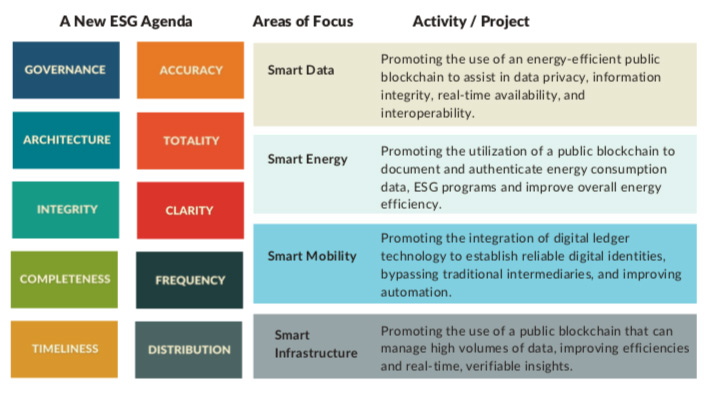
Join the proof-of-ESG initiative
The time has come for Environmental, Social and Governance (ESG) honesty. Blockchain offers an honest, open, and stable architecture, providing the foundation for connected systems that can help to make better real-time decisions, increase the efficiency of energy usage and improve overall quality of life.
To learn more about how you can participate, take a look at the ESG stamp initiative’s web page.
